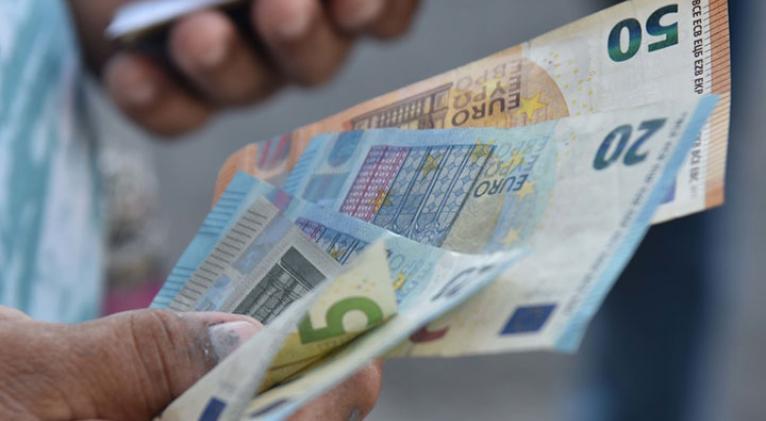Financial Schemes to Generate More Foreign Currency
especiales

The insufficient generation of foreign currency, which severely limits the ability to solve multiple problems and develop important projects and programs, is at the center of the Cuban government’s attention, particularly given the country’s high dependence on imports as an open economy.
For this reason, increasing and diversifying external revenues is the second general objective of the government’s program to correct distortions and boost the economy. However, the first objective, which focuses on advancing macroeconomic stabilization, is also being pursued with that same goal in mind.
An example is the new mechanism for managing, controlling, and allocating foreign currency, as part of the partial dollarization of the economy.
The island’s main sources of revenue come from the export of goods and services, remittances from abroad, flows of foreign investment, the management of external financing, and e-commerce, all of which provide much-needed hard currency.
As has been publicly acknowledged, deficiencies and difficulties persist in these indicators, the latter largely caused by the U.S. embargo and Cuba’s inclusion on the spurious list of state sponsors of terrorism.
One way to alleviate the critical situation has been to decentralize access to foreign currency, allowing it to return directly to producing and exporting entities, without intermediaries in value chains.
This ensures that the main beneficiary is the producer, enabling the purchase of inputs and machinery, raising yields, and providing motivation to supply more goods and services for foreign trade.
In fact, such decentralization is not new. In recent years, efforts have been made to allow exporters and other foreign currency-generating entities to retain a portion of these earnings to guarantee re-supply.
Given current urgencies and difficulties, however, authorities are working to move forward more broadly and rapidly, recognizing the high demands on all parties involved and the requirements of the market.
To ensure the efficient implementation of these financing schemes, financial flows have been analyzed with the heads of agencies, business groups, and approved entities, determining the feasibility of opening current, income, and expense accounts in U.S. dollars, including accounts abroad.
Nearly 30 Entities or Activities Selected
During the Fifth Ordinary Session of the National Assembly of People’s Power (ANPP) in mid-July, Joaquín Alonso Vázquez, Minister of Economy and Planning (MEP), stated that to increase external revenues, strengthen the export sector, and promote import substitution, 29 self-financing schemes in foreign currency have been approved. These aim to stimulate productive capacities and ensure their sustainability.
The list includes, for example, the Civil Aviation Corporation (CACSA), Cubapetróleo (Cupet), the business groups Geominsal, Palco, Gemar, Biocubafarma, Caudal, Automotive Transport (GEA), and Recycling (GER), as well as Etecsa, the Transportation Fund, and sectors such as honey, grains, charcoal, and aviation biofuels, along with the Ministry of Science, Technology and Environment (Citma) and the Ministry of Foreign Affairs (Minrex).
Preliminary results include productive linkages between state enterprises and non-state management forms, revitalization of production and services, recovery and modernization of idle or obsolete industrial capacities, import substitution, and foreign currency revenue generation.
These financing schemes are producing results, but they do not succeed merely by being designed and implemented, Minister Alonso Vázquez cautioned during the Ninth Congress of the National Association of Cuban Economists and Accountants (Anec) last June. Cuba still faces many risks in foreign trade operations.
In the most recent session of the ANPP, as part of follow-up on the government program to correct distortions and reenergize the economy, it was reported that not all approved closed-loop financial schemes are operational. Accelerating their implementation and maintaining systematic control and evaluation of their impacts is essential.
Other Impacts and Proposals
One positive outcome cited is the favorable reception among producers of high-quality wrapper and premium tobacco, whose participation in the value chain has increased through the creation of sorting facilities at the farm level.
This has resulted in a greater supply of export-quality wrapper leaves and improved access to inputs and technologies, thanks to the foreign currency generated and reinvested in production processes.
Such systems encourage exports, as companies quickly see the benefits once tangible gains are realized, demonstrating the importance of selling abroad.
At its Ninth Congress, Anec proposed allowing a group of selected exporters to operate exclusively in foreign currency, retaining 100 percent of their export earnings and gaining access to critical inputs such as energy, fuel, and transportation in freely convertible currency.
It also recommended that exporting companies operating under this scheme be allowed to sell part of their foreign currency earnings on the exchange market to cover payments to domestic suppliers, wages, and tax obligations.
As Prime Minister Manuel Marrero Cruz informed Parliament, in the second half of the year the new mechanism for managing, controlling, and allocating foreign currency will be implemented with greater momentum, along with the transformation of the official exchange market. The functioning and protection of financing schemes will reach full capacity.














Add new comment